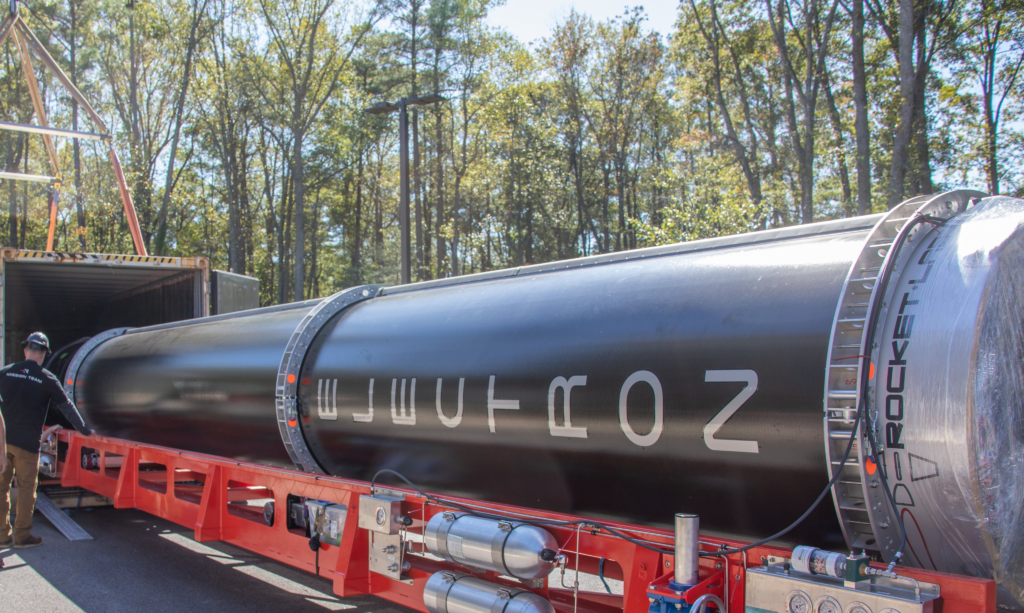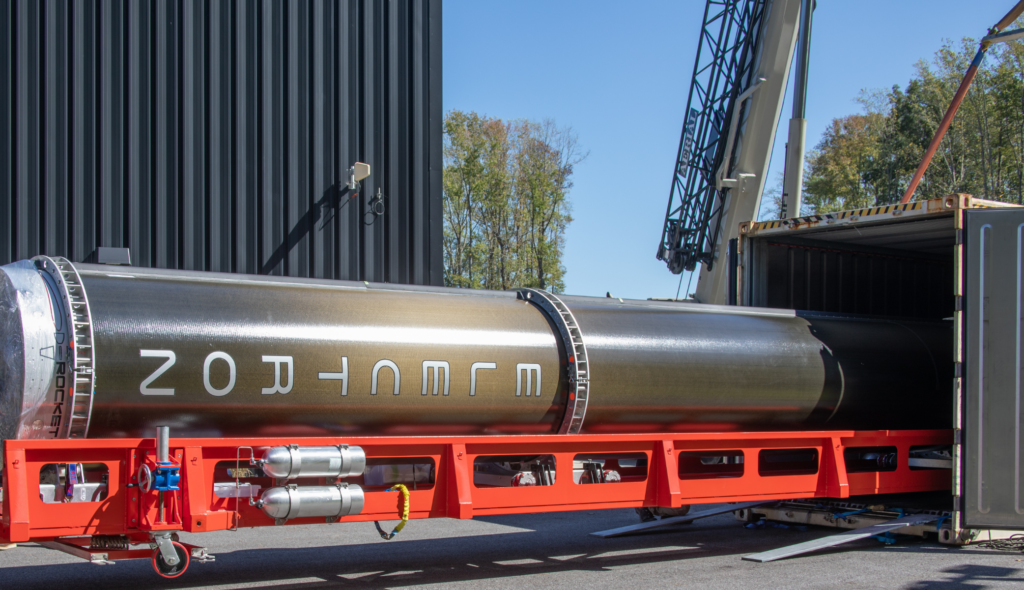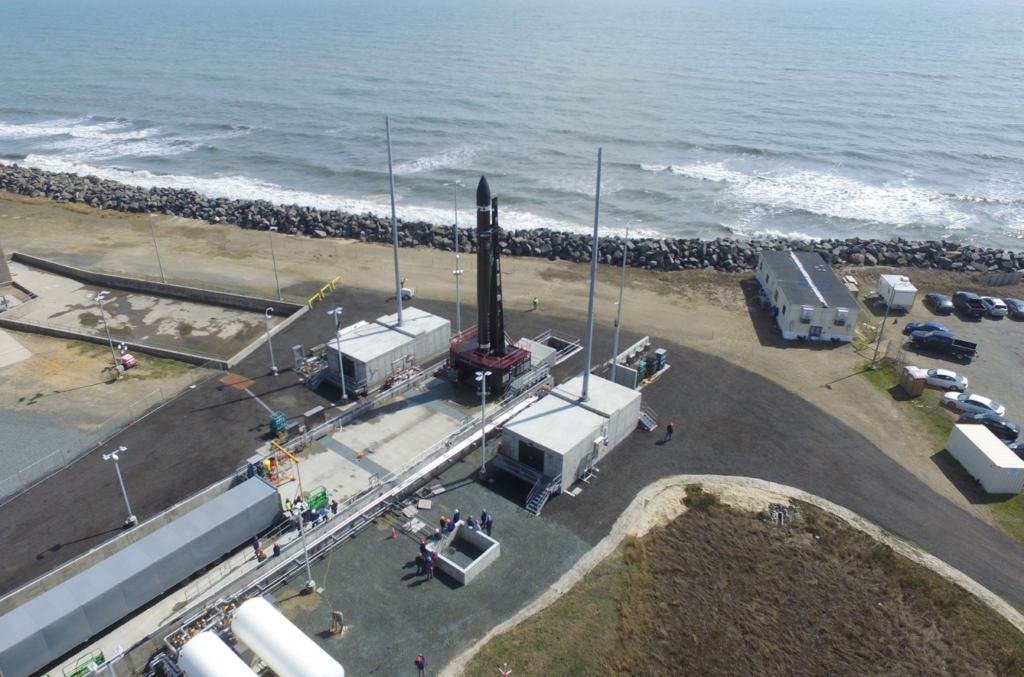
Rocket Lab’s First Launch From U.S. Soil Is Only Months Away
This year has been Electron’s most impressive for a variety of reasons, especially when considering launch cadence. So far, the company has had 8 successful launches in 2022, with more planned in the coming months. Not to mention, this company milestone was achieved using only one launch complex. Thankfully, the first launch from U.S. soil and Launch Complex 2 is set to happen in only a couple of months.
Specifically, yesterday Rocket Lab announced that the first launch from Virginia is scheduled to happen this December. This is a very big deal as it marks the beginning of Rocket Lab operating two launch pads at the same time. If successful, this mission will have a significant impact on the future of Electron’s launch opportunities, something Rocket Lab has been working very hard on.
The use of Launch Complex 2 has been a long time in the making. The pad was officially opened almost three years ago in late 2019, yet saw no launches throughout this time period. This was for a variety of reasons including various delays relating to NASA. Here I will go more in-depth into this upcoming mission, why it’s so important, the history of Launch Complex 2, and more.
First LC-2 Launch

Yesterday Rocket Lab tweeted saying, “Electron has arrived in Virginia! The countdown is on to our first mission from Launch Complex 2 in December for @hawkeye360.” Specifically, the mission will deploy satellites for radio frequency geospatial analytics provider HawkEye 360 and will be Rocket Lab’s first lift-off from Launch Complex 2 at Virginia Space’s Mid-Atlantic Regional Spaceport within NASA’s Wallops Flight Facility – a launch pad developed to support Electron missions from U.S. soil for government and commercial customers. Encouraged by NASA’s recent progress in certifying its Autonomous Flight Termination Unit (NAFTU) software, which is required to enable Electron launches from Virginia, Rocket Lab has scheduled the mission from Launch Complex 2 in December 2022.
With Electron now at Launch Complex 2, Rocket Lab will begin final launch preparations including a standard launch dress rehearsal and payload integration at Rocket Lab’s dedicated Integration and Control Facility near the launch site. At the time of the announcement, Rocket Lab CEO and Founder Peter Beck said, “We are looking forward to seeing Electron take to Virginia skies for the first time very soon. Rocket Lab has been providing reliable and responsive access to orbit for more than four and a half years with Electron and we’re excited to build on that strong heritage by unlocking a new path to orbit from right here on Virginia’s Eastern Shore. We are delighted to be working with the dedicated teams at NASA, Virginia Space, Accomack County, and HawkEye 360 to launch this historic mission and begin a new era of space access.”
The mission will be the first of three Electron launches for HawkEye 360 in a contract that will see Rocket Lab deliver 15 satellites to low Earth orbit between late 2022 and 2024. These missions will grow HawkEye 360’s constellation of radio frequency monitoring satellites, enabling the company to better deliver precise mapping of radio frequency emissions anywhere in the world. Supporting Rocket Lab’s vertical integration strategy, Rocket Lab will also supply HawkEye 360 with separation systems produced by Planetary Systems Corporation, a Maryland-based space hardware company acquired by Rocket Lab in December 2021. In addition, yesterday, they also tweeted mentioning, “Electron is at LC-2, so now the fun begins. In the next few weeks, we’ll work through a wet dress rehearsal, as well as payload integration with @hawkeye360’s spacecraft. Then it’s off to orbit in December for this rocket.” This included an image of the Electron rocket and some of the team.
Launch Complex 2 supplements Rocket Lab’s existing site, Launch Complex 1 in New Zealand, from which 31 Electron missions have already been launched. The two launch complexes combined can support more than 130 launch opportunities every year, delivering unmatched flexibility for rapid, responsive launch for government and commercial satellite operators. The launch pad and production complex for Rocket Lab’s large reusable Neutron launch vehicle will also be located at the Mid-Atlantic Regional Spaceport, streamlining operations across small and large launch.
LC-2 Overview

Back in December 2019, Rocket Lab announced the completion of LC-2. Located at the Mid-Atlantic Regional Spaceport on Wallops Island, Virginia, Rocket Lab Launch Complex 2 represents a new national launch capability for the United States. Construction on the site began in February 2019, with the site completed and ready to support missions just 10 months later. Designed to support rapid call-up missions, Launch Complex 2 delivers responsive launch capability from home soil for U.S. government small satellites. The ability to deploy satellites to precise orbits in a matter of hours, not months or years, is increasingly important to ensure resilience in space.
One of the main reasons this launch complex was completed in 2019 yet still has not supported a mission, has to do with NASA. As partially mentioned prior, this has to do with the Autonomous Flight Termination Unit (NAFTU) software. After completing the complex, Rocket Lab began waiting on NASA to certify the autonomous flight termination system that will be used on the rocket to provide range safety. Here, NASA controls the launch range at the Wallops Flight Facility, where LC-2 is located. At the time of this process, Peter Beck highlighted, “There’s a very long certification process that, quite frankly, we probably underestimated how long it would take.” Not to mention, a few errors were found in the software that added to the delays and lack of certification for the complex. This all added up and ended up taking quite a bit longer than originally expected. Thankfully, now in late 2022, we can expect the first launch from this site in only a few months.
Taking a closer look back at the launch complex itself, following a site selection process in late 2018 involving multiple U.S. spaceports, Rocket Lab selected the Mid-Atlantic Regional Spaceport as the best location of Launch Complex 2 due to the wide orbital inclinations the site can support, as well as the rapid planned construction timeframe. More than 150 local construction workers and contractors were involved in the development of Launch Complex 2, with many Virginia-based companies supplying services, hardware, and materials for the site. Locally built infrastructure at Launch Complex 2 includes the 66-ton launch platform and 7.6-ton strongback for the Electron launch vehicle, supplied by Virginia-based company Steel America. All of which supported the impressive 10 month build time.
In addition to the pad itself, Launch Complex 2 is also home to the Integration and Control Facility located within the Wallops Research Park for processing payloads and Electron launch vehicles prior to lift-off. The ICF can house multiple Electron launch vehicles for pre-launch integration and is home to Launch Complex 2 Range Control operations, payload integrations cleanrooms, and administrative offices. With the launch site now operational, Launch Complex 2 is expected to employ up to 30 people in engineering, launch safety, and administrative positions.
With this site only months away from being fully operational, we can expect to see an impressive jump in launch cadence. To better put this in perspective, not long ago Rocket Lab completed the second pad at Launch Complex 1. The addition of just another pad helped the company improve launch speed significantly and continue to prepare for the next mission. Specifically, with two launch pads and private range assets at Launch Complex 1, concurrent launch campaigns became possible from the site. Rocket Lab pointed out that the addition enables resilient access to space by accommodating tailored customer requirements or late changes to a spacecraft while keeping Rocket Lab’s manifest on schedule. Operating two pads also eliminated pad recycle time, ensuring a launch pad is always available for a rapid-response mission. In addition, Peter Beck said, “A reliable launch vehicle is only one part of the puzzle to unlocking space access – operating multiple launch sites so we can launch when and where our customers need to is another crucial factor. We are proud to be delivering responsive space access for our customers, making back-to-back missions possible within hours or days, not weeks or months.”
He finished by pointing out, “Even with just one pad at Launch Complex 1, Electron quickly became the second most-frequently launched U.S. rocket every year. Now, with two pads at Launch Complex 1 and a third in Virginia, imagine what three pads across two continents can do for schedule control, flexibility, and rapid response for satellite operators globally.”
Conclusion
Rocket Lab is only a few months away from the first launch from U.S. soil at the company’s Virginia Launch Complex 2. While this first mission has been a long time in the making, it is finally set to happen. This will likely have a very positive impact on Rocket Lab’s schedule and overall Electron launch cadence. We will have to wait and see how it progresses and the impact it has on the space industry.
